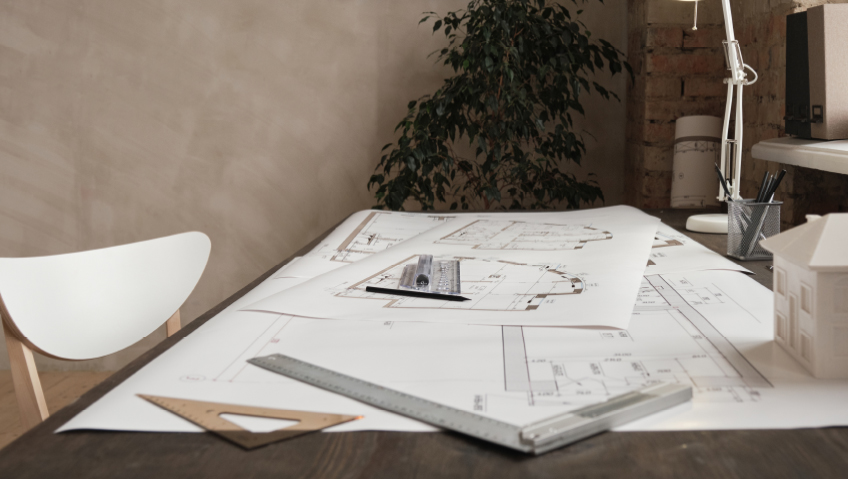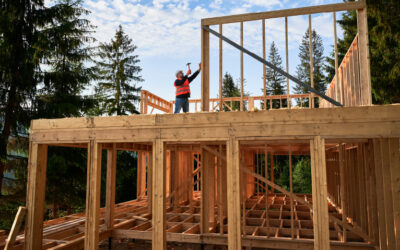With more inventive new ideas being suggested about how to build than there are new buildings, it seems that the only limit on novel building materials is the limit of our own imagination. So, what could the future of building be?
Famous worldwide for its beer, Amsterdam’s Heineken is also renowned for its creative advertising and iconic green glass bottles. During a trip in the early 1960s to the Dutch Antilles – as it was at the time – company head ‘Freddy’ Heineken was dismayed at the amount of trash he saw on the idyllic Caribbean Islands, including beer bottles from his own company.
A visionary long before words like ‘recycling,’ ‘reuse’ and ‘sustainability’ became eco-words, Heineken knew something good could be done with the discarded bottles.
Contacting John Habraken, Director at the Foundation for Architects’ Research (SAR), the two men conceived a revolutionary idea: re-tooling the famous Heineken beer bottle so it could be used as a building product. The result was the patented WOBO ‘world bottle’ in 1964.
The WOBO is born
Keeping its distinctive green tint, the new design came in two different sizes. Putting aside the traditional cylindrical shape, the bottle was rectangular so it could be stacked like clay bricks. A short neck ensured that the top of one WOBO would lock into the base of the next, and a dimpled body helped it to stay in place once mortar was applied, just as typical bricks made from clay or shale do.
Although the new bottles had some issues with chipping and weight and eventually fell out of favour, the WOBO was ahead of its time, aesthetically and environmentally.
Architectural critic, writer, editor, and lecturer Martin Pawley called the unique bottle “the first mass-production container ever designed from the outset for secondary use as a building component.”
The author of numerous books on architecture and on visionary, often controversial architects such as Buckminster Fuller and Le Corbusier, Pawley also wrote Garbage Housing, in 1975, and Building for Tomorrow: Putting Waste to Work, published in 1982.
Instead of just urging eternal struggle against ever-increasing waves of garbage, Pawley, much like Alfred Heineken with his WOBOs, espoused the notion of re-using consumer waste.
Packaging could be re-imagined and designed to have a secondary use as low-cost construction materials. And with an increasing awareness over the past four decades of important environmental issues – such as preserving old-growth forests, active recycling programs, and using less energy – what was once considered strange is fast being embraced.
Navigating the woodlot
From an occasional dearth of toilet paper to a scarcity of canned goods, COVID-19 has made businesses and households alike realize what a perilous state global supply chains are in. In the building arena, the pandemic continues to double-whammy both builders and renovators.
Although many areas of construction were deemed essential and allowed to operate through the crisis, others – for instance wood harvesting and processing – weren’t so fortunate, with sawmills worldwide forced to close through worker infections.
Combined with trade wars and tariffs at the pandemic’s start in March 2020, this triple jeopardy saw the forestry sector lose an estimated $1.1 billion that year alone, a huge blow for the third-largest agricultural export sector after soybeans and corn.
For the construction industry, wood supply shortages have caused a tsunami at the cash register. After reaching $1,515 per thousand board feet, the price plummeted a few months later to $389 for the same quantity. Earlier this year, the price almost tripled from its low, last August, to $1,111 per thousand board feet, an increase of 186 percent. Where wood was most scarce, the price increase was a staggering 340 percent.
And with costs passed on to consumers, sky-high lumber prices added almost $36,000 US to the already high price of an average new family home.
Moving beyond lumber
Long used worldwide as a construction material because of its abundance, low cost, and durability, wood is facing its challengers in the building arena.
From natural materials to man-made goods, products are constantly being introduced to the market that rival hardwoods like oak, maple, ash, and cherry, and softwoods such as pine, cedar, fir, spruce, and hemlock.
Wood has its advantages and disadvantages. On the positive side, it has lasting thermal properties, absorbs sound, and is lightweight and durable. Its downside includes vulnerability to fire, flood, and insects such as termites, always ready to reduce wood structures to sawdust.
Rising costs and fragile supply – as evidenced during the pandemic – are leading some builders to explore alternatives to wood, including such natural materials as stone, clay, straw, bamboo, hemp for walls, and wool and recycled jeans for insulation, or the growing number of man-made materials. In some developing countries, using discarded material like old tires filled with compacted earth or even metal cans to create walls has long been an accepted solution.
New look at old ideas
In his book, The Complete Guide to Alternative Home Building Materials & Methods: Including Sod, Compressed Earth, Plaster, Straw, Beer Cans, Bottles, Cordwood, and Many Other Low-Cost Materials, Jon Nunan writes that many building materials and methods today considered ‘alternative’ go back centuries.
“The reason why these building techniques are gaining popularity in modern times is twofold,” says the author. “First, these old building techniques are far more eco-friendly than the majority of structures we are used to seeing; second, these structures are simple enough in nature that they can be built cheaply and without the aid of a lot of the heavy and expensive equipment associated with most new construction.”
Along with wood, the Earth provides an abundance of materials that can be used in building, either in their natural state or mixed with other products.
Farmed for thousands of years, fibres in hemp have been used for everything from paper to fabric to rope. When mixed with lime, pozzolans (siliceous materials), and sand, it can be made into biocomposite Hempcrete. Although it doesn’t have the same strength as concrete, Hempcrete or hemp-lime is an excellent, affordable insulator with moisture-resistant properties.
Another product gaining popularity for its properties is insulation made from recycled denim. Originally made from cotton – which is itself natural – old jeans are stripped of metals such as zippers and buttons, shredded, and deconstructed back into fibres before being processed with fire retardant and made into insulation sheets. Like Hempcrete, this insulation has a high R-value and sound-minimizing properties, doesn’t give off headache-causing volatile organic compounds (VOCs), and best of all, it repurposes natural materials.
While products like Hempcrete are based on natural materials, there are many others in existence, and on the market, rivalling wood for durability, longevity, and ease of construction. Some are already manufactured, and simply re-purposed, such as shipping containers transformed into low-cost housing.
One of the best-known is modular construction. Precast concrete panels are made offsite, with accommodation for electrical lines, plumbing, and so on. Transported to sites, these modules are then set in place to create a building.
As always, there are pros and cons. While modular panels are heavy, they can be quickly assembled. Considering the shortage of skilled trades worldwide, the speed of construction is a plus.
Although wood and other natural materials like stone and straw bales will continue to be used in construction for generations to come, building methods and materials will continue evolving in the form of products like Insulating Concrete Forms (ICF) and green concrete (which incorporates waste material) and become increasingly used as viable, durable substitutes.













